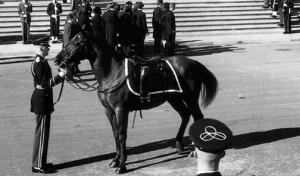 Up high on a ridge line at 10,000 feet, stillness humbles a man. At least, that’s what it did to Angus in the 1880s. Could be those hard to reach places are just as still now as they were back then. I don’t mean quiet. Still feels different—it can have sound—wind or trees rustling—it can come with movement—clouds drifting or rain falling. But there’s no mistaking it when you come on it. It’s a repose, like a snaffle bit in the mouth of a high-stepping mountain horse. And when you and your horse are both still, in tune with the mountain, those dead leaves and soft clouds take on a funeral feel. Sometimes you get itchy in the stillness when the sun drops below the western horizon or shows up just as false light is sinking down in the east.
Up high on a ridge line at 10,000 feet, stillness humbles a man. At least, that’s what it did to Angus in the 1880s. Could be those hard to reach places are just as still now as they were back then. I don’t mean quiet. Still feels different—it can have sound—wind or trees rustling—it can come with movement—clouds drifting or rain falling. But there’s no mistaking it when you come on it. It’s a repose, like a snaffle bit in the mouth of a high-stepping mountain horse. And when you and your horse are both still, in tune with the mountain, those dead leaves and soft clouds take on a funeral feel. Sometimes you get itchy in the stillness when the sun drops below the western horizon or shows up just as false light is sinking down in the east.
Today, especially in urban settings, stillness is an unrecognizable thing. There’s too much breaking, knocking, horning, clicking, going on. And then there’s the people. Entirely too many of ‘em, Angus would think. And even in the dead of an urban night, when the air faints and the rumble on a street two blocks away seems timid, it is not still. There’s always someone about, maybe not spittin’ distance from you, but always within rock-throwing distance, if you could throw rocks through brick walls or over chain link fences.
Up high on a mountain ridge, there’s always critters lurking about looking for food, shelter, or a place to hide. But those critters don’t affect the stillness of the place. Down in the flats, the critters are more likely of the human variety, doing exactly the same thing mountain critters do—lurk, dig, scratch, and hide. My advice. Take a trip out of urban space every once in a while and look for still space. You’ll know it when you feel it.
